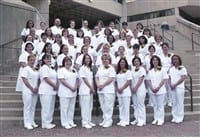Adapt Your Practice to a New Model of Care Delivery
If you are a primary-care provider and are not familiar with the term ‘patient-centered medical home,’ or PCMH, now is the time to start learning.
The PCMH is the up-and-coming model of care that promotes and supports comprehensive, coordinated, patient-centered care delivery. The Mass. Executive Office of Health and Human Services has set a goal for all primary-care practices in Massachusetts to become patient-centered medical homes by 2015.
The PCMH model emphasizes care coordination and communication between patients and their providers. Medical homes can lead to higher quality and lower costs, and can improve patients’ and providers’ experience of care. Massachusetts has not yet established clear guidelines for primary-care practices to follow; however, many local healthcare organizations and physician practices have already embraced this model by becoming recognized as patient-centered medical homes through the National Committee for Quality Assurance (NCQA) recognition program.
The NCQA program looks at various aspects of patient care delivery (including access, care coordination, patient education, disease management, and patient satisfaction), and if a practice can demonstrate that it meets the required elements of the joint principles for at least 75{06cf2b9696b159f874511d23dbc893eb1ac83014175ed30550cfff22781411e5} of its patients, it can be eligible for PCMH recognition by the NCQA.
Transforming your practice into a patient-centered medical home can take some time and resources, depending on what processes you may or may not have in place. Here are some practical tips to help your practice start implementing the PCMH model:
• Look at your current processes. It is important to identify your current processes around patient scheduling, referrals, followup, and other areas that impact patient care and access. Does your office offer late-night or weekend appointments? Is someone available for medical emergencies 24/7? (This can be through a relationship you have with other covering physicians and/or clinics.) Asking these questions will help you identify any current gaps you may have or bring up opportunities to tighten and/or improve processes.
• Identify gaps and implement a plan to address them. You should prioritize based on those areas that will ultimately have the most impact and are fairly simple to implement. For instance, what are you doing around scheduling to ensure that physician schedules leave room for same-day appointments? Are you currently providing patient-education materials? How is the practice following up on labs and referrals? Creating a plan around the different processes is important. At the same time, what is your practice doing to enhance communication and engage patients in their care? Is your practice currently using community resources? Do you offer patient-education programs to increase patients’ knowledge of how to best access care and participate in treatment decisions?
• Track and assess your progress over time. You may need to make some adjustments along the way as you try different approaches. For example, you may implement a referral-tracking system to manage and keep track of where you send your patients, only to find out that some patients who happen to have a language barrier are not showing up to their scheduled appointments. To address this issue, you may need to have your staff personally contact those specific patients to confirm appointments.
For more information on implementing the PCMH model, contact certified PCMH content experts Talia Goldsmith and Kerry Ann Hayon at pprc@mms.org or (781) 434-7702. –
Talia Goldsmith
is a specialist with the Physician Practice Resource Center, a program of the Mass. Medical Society (MMS). This article first appeared in Vital Signs, a publication of the MMS.
is a specialist with the Physician Practice Resource Center, a program of the Mass. Medical Society (MMS). This article first appeared in Vital Signs, a publication of the MMS.


Comments are closed.